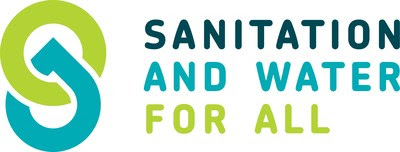Data from Sphera’s New Safety Report reveals that even though safety is part of the corporate culture, companies lack a well-defined roadmap to implement safety improvement measures.
CHICAGO, Oct. 28, 2021 (GLOBE NEWSWIRE) — While most companies have embraced safety as part of their corporate culture, there are still hurdles to overcome to improve their process safety and personal safety performance, Sphera’s new Safety Report reveals.
Sphera®, a leading global provider of Environmental, Social and Governance (ESG) performance and risk management software, data and consulting services, surveyed nearly 350 risk, process safety and health and safety professionals. Results show that while 75% of the respondents said that safety is part of their organization’s corporate culture, only 40% said they have a well-defined safety performance roadmap in place.
Safety is the foundation of any strong organization and a key component of ESG. According to Sphera’s Safety Report, creating a safety culture is just as important as being compliant, which has impacted the prioritization of performance safety drivers. Respondents indicated that the top three key safety performance drivers are reducing operational and major accident hazard (MAH) risk exposure (60%), regulatory compliance (48%), and corporate and board priority (37%).
Employer awareness of the safety hazards facing their workforce has been heightened during the pandemic. Over a quarter (27%) of respondents indicated that the adoption of centralized Health and Safety processes is lagging.
For five years, Sphera produced the highly anticipated Process Safety Management/Operational Risk Management (PSM/ORM) report exploring industry trends in process safety and operational risk management. However, with the 2021 report Sphera has expanded the overall safety landscape to include health and safety as well. While the occupational safety and health sector has especially felt pressure, companies across all sectors have had to make constant structural adjustments to keep workers safe.
“The pandemic has highlighted just how quickly safety and risk management processes can be thrown off balance. Safety in all its aspects makes for a resilient and sustainable business model, especially in an era when ESG goals are of the utmost importance,” said Sphera CEO and President Paul Marushka. “An effective safety culture and efficient safety process helps ensure a healthy workforce and enhanced business performance. However, we are still seeing a gap in how companies link safety and business performance, which highlights a need for a more holistic approach through data, software and expertise.”
Additional insights:
This year’s survey shows 51% of respondents pointing to limited resources, 43% to conflicting priorities and 31% to limited budgets as the main obstacles to delivering planned safety-critical maintenance and inspections, which has remained consistent. These leading indicators of the underlying problems preventing organizations from achieving improved safety
The Sphera Safety Report shows that there is still work to be done implementing risk monitoring practices that address the full spectrum of risks across organizational silos. Additionally, a little over half (56%) of respondents indicated that they still track critical safeguards/barriers manually, such as loss of containment and structural integrity, and a mere 19% said that these safeguards are monitored in real time. This further highlights the stronger ties between process and worker safety that emerged during the pandemic and the need for organizations to have a holistic view of safety and risk management.
About the Safety Survey
Sphera surveyed 349 risk, process safety, and health and safety professionals from a cross-section of global industries from across the world evaluating their safety standards for the 2021 Safety Report. Respondents came from several global industries, such as Manufacturing, Oil and Gas, Chemicals/Petrochemicals, Energy, Construction, Professional Services and Government.
About Sphera
Sphera is the leading provider of Environmental, Social and Governance (ESG) performance and risk management software, data and consulting services focusing on Environment, Health, Safety & Sustainability (EHS&S), Operational Risk Management and Product Stewardship. Learn more about Sphera at www.sphera.com. Follow Sphera on LinkedIn.
For media inquiries or to request a copy of the report, please contact:
Denise Jones, Marketing Communications Manager, Sphera, djones@sphera.com


